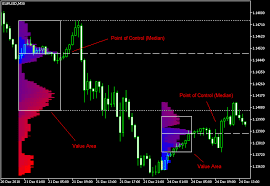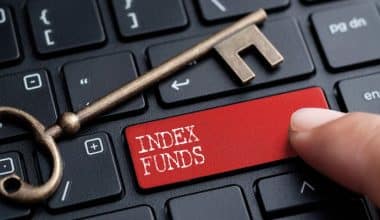When the word market profile comes across your hearing, what exactly comes to your mind? Well, it is important to understand what the market profile is about and how it can work best for you. Therefore, this article covers every topic on market profile, including the TAS market profile, target market profile, market profile chart, and trading market profile. So keep reading to discover more.
Market Profile
The market profile shows all executed trading volumes for each price level. It is opposite to the normal volume indicator, which shows the trading volume based on time. It also allows you to observe the accumulation and distribution of the market. In order to see that every candlestick is not created equal. Meanwhile, some prices have significant trading volume while others have a lower trading price, either accept instantly or decline to return to the “value zone”.
Note: The market profile was devised by J. Peter Steidlmayer, a trader at the Chicago Board of Trade (CBOT), who lived from 1959-1985.
What Is Market Profile Strategy?
Market profile is a style of plotting “Price” on the Y-axis and “Time” on the X-axis, which typically forms a bell-shaped image for the profile’s body. It assists day traders in identifying Other Timeframe Participants (Big players) with financial and informational leverage.
TAS Market Profile
TAS Market Profile is a well-known leader in the field of market, providing information, and unique technical analysis. They also provide adequate training for day traders. The major intention of the company is to implement the best charts and financial tools in the industry. With these tools, market experts can gather market information and conduct in-depth analyses of the market.
According to the TAS Market Profile Review, experienced traders, money managers, and banks use these tools to understand market performance. And this helps them in making better market decisions. Meanwhile, market experts use the market intelligence they collect via the TAS market profile to identify opportunities and to make traders profitable. However, the company was founded by Steve Dahl, a revered expert on the Market Profile trading method. Notwithstanding, the company has three flagship products which include TAS Charting Indicators, TAS Profile Scanner, and The EDGE.
Read Also: Sell Put Options Overview with Options Trading Examples
Target Market Profile
The focus of market research is to collect data and provide a complete picture of the target market profile. When a company does this, it creates its own customer profile, also known as a persona. Meanwhile, this is the profile of your customer who wants and needs your product and is very detailed. A good customer profile should be as specific as possible. Many companies name and draw images. They can post photos of real people who represent their markets.
The basis of a customer profile is demographic information. You can think of these as personal statistics, which should include the following:
#1. Target Market Demographic Information
- Age
- Gender
- Family structure
- Marital status
- Education level
- Geographical location
- Occupation
- Political affiliation
- Religious affiliation
- General income level
Read Also: Trading Deep In The Money Options- Risks to consider
#2. Your customer’s lifestyle and hobbies
Lifestyle and hobbies are also essential. These fall into an important data category called psychological data. Some examples of lifestyle and hobbies data for your target market include the activities of your customer when they have free time, their eating, and health habits. Also, it should cover their smoking and drinking habits, Clubs, and organizations they belong. The places they frequently visit should also be included in this data.
#3. Customer moral and values database
Psychological data centers on the way your target market sees itself. You also need to clearly define your customer’s attitudes and beliefs about themselves, the world around them, current events, and products like yours. This category includes goals, ideals, and the place they see themselves in the future.
#4. Pain point
Study the places where your customer needs you the most and try your possible best to meet their needs in those areas.
#5. Customer shopping habits
The target market profile should also cover how your customers shop in the market. This includes how much they spend, where they shop (online or offline), and how they use your purchased products. Your job as a marketer is to connect your customers to the right products at the time and place they are looking for. That’s why this information is so important.
What Are the 4 Parts of a Consumer Profile?
A customer profile or consumer profile is a comprehensive description of your current clients. You would identify purchasing behaviors, pain points, psychographic data, and demographic data in a customer profile in order to target similar customers in your sales and marketing campaigns.
Read Also: BACKTESTING TRADING: Definition, How It Works and Examples
Market Profile Chart
Market profile charts are useful tools for both short-term and long-term traders. It is usually based on price and quantity information, and it combines these factors to display price, quantity, and time ranges in a single graph. Meanwhile, this data shows the value areas and control points of a stock. See the 20+ stock movies you should watch.
However, these charts use standard market data, so no level 2 market data (maximum bid, bid size, minimum requested price, and requested price) is required. However, it is also known by other names such as Sierra Chart TPO (Time Price Opportunity) which is represented by letters on the chart, Sierra Chart Ratio, Volume Chart, etc.
Is Volume Profile and Market Profile Same?
Volume Profile shows how much volume was traded at each price level, whereas Market Profile indicates how long the price traded at each level. Since it is volume (buying and selling) and not time that moves markets, many traders consider Volume Profile to be a more “true” technical analysis study.
Trading Market Profile
Market profile charts can be used as a complete trading system or as part of a larger trading system. In any case, it is usually traded based on support and resistance prices (if the market cannot support low prices or resist high prices). However, it also determines how prices interact with control points.
Day traders can trade rebounds at the nearest control, which is the same as trading at the support level. Meanwhile, weekly traders can trade breakouts at yesterday’s or previous control points, which is trading at a price that breaks the resistance or support level.
As with all techniques and methods, using market profiles requires practice. There are many virtual trading simulators that can provide you with the exercises you need to become a comfortable future trader. That’s when you will feel comfortable enough to invest your money. Learn more about the Heikin Ashi candlesticks for further understanding of this topic.
Do Professional Traders Use Market Profile?
Professional traders identify value, price acceptance, and price rejection using Market Profile charts. You have access to the Volume Profile study, the Market Profile Value Area (MPVA) study, and the Profile Area Pointer Tool with Market Profile charts.
Is Market Profile a good indicator?
It can assist individual traders in recognizing patterns in herd behavior, leading to a greater comprehension of market sentiment as a whole. It can be utilized for both short- and long-term analysis. The profile is constructed by plotting the transaction volume at each price level.
What Is Tpo Market Profile?
The Time Price Opportunity (TPO) Chart illustrates the price distribution during the specified time period, thereby creating a profile. This enables you to determine where the price has spent the most time, as well as the most important support and resistance levels.
Which Indicator Is Best for 5 Min Chart?
The five-minute momo strategy is intended to assist forex traders in playing reversals and maintaining positions as prices trend in a new direction. The strategy is dependent upon exponential moving averages and the MACD indicator.
Conclusion
The market profile is a professional way to evaluate the auction process. Exchange trading is a two-sided auction between buyer and seller. Analysts can use a variety of methods to build market profiles to assess the dynamics of daily and long-term trading development.






